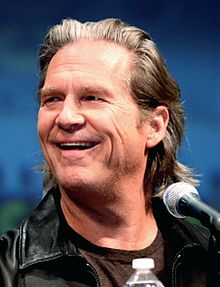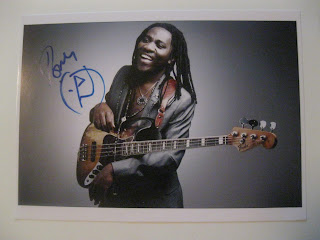
Da Silva Ramos was born in Paris, France. He first ventured into motor racing, driving an MG TC, in March 1947, when at the age of 21, he competed in the Interlagos Grand Prix in Brazil.[3] During 1953 he began racing an Aston Martin DB2/4 in sports car races in France. In 1954 at Montlhéry, he crossed the line in second place in the Paris Cup but was winner of the Coupe de Montlehery. In the same year, he also participated in the Le Mans 24 hour race, with Jean-Paul Colas as his co-driver, being forced to retire after 14 hours following a rear axle failure. Also in 1954, he ran out of fuel whilst leading the Tour de France Auto and retired with a damaged engine in the Rally of Morocco. Later in the year in the Salon Cup, in which he also had to retire, he drove a Gordini Type 18.[3] In 1955 he (with co-driver Lucas) were disqualified for speeding in the Monte Carlo Rally, eventually classified 46th and 4th in class, won the Coupe de Montlhery again, won the Rally Sable-Solesmes and was 5th in the GT class of the Mille Miglia with co-driver Vidille.[4]
Da Silva Ramos participated in seven Formula One World Championship Grands Prix, debuting on
 19 June 1955 and scoring a total of two championship points.
19 June 1955 and scoring a total of two championship points.“Nano” , as he is affectionately called, is good company, rarely without a smile, and has a way of standing back and observing things that went on around him. Indeed he was on the sidelines of the “Behra Affair” that eventually saw Jean Behra booted out of the Ferrari team only to die two weeks later in a sports car accident at the Avus track in a Porsche. Nano’s first race was back in Brazil with an old MG but then he moved to France and in the early 1950s he visited Le Mans as a spectator. He was intrigued by the Aston Martins and ordered a DB2 Coupe.
When we went to collect the car in Paris he met Mike Sparken, a French-born enthusiast who the same Aston as Nano was about to buy so Mike ordered an identical car.
Ironically both of them were eventually to drive and race Ferraris. At that time a number of racing drivers in Paris used to visit “Jimmy’s Club” and early one morning, about 5.00 am, da Silva Ramos and English racing drivers Peter Collins and Lance Macklin decided to have a race around the famous Arc de Triomphe in the middle of Paris. Not only that, they decided to race around it clockwise which is the wrong way round and were lucky not to meet any traffic. As Nano explained “We were lucky, the streets of Paris were quiet and there were no police around!“.
French racing car constructor Amedee Gordini saw da Silva Ramos race his street Aston Martin and was impressed and offered him a Gordini sports car and later grand prix drive but this came to an end in 1957. Nano’s best friend was the Marquis de Portago and when he was killed in the Mille Miglia that year Nano decided to quit racing. A year later, however, thanks to his French racing friend Jean Estager, who owned and raced Ferrari 250GT TdF s/n 0749GT, he came back into racing.
 In the 1957 Tour de France Estager had shared the car with grand prix driver Harry Schell who comprehensively damaged it when he hit a little Citroen 2CV that had strayed on to a closed special stage. Now repaired, Estager sold 0749GT to da Silva Ramos who took the former owner with him on the 1958 Tour de France. They finished third overall behind winners Olivier Gendebien/Lucien Bianchi ( TdF 1033GT) and Maurice Trintignant/ Francois Picard (TdF 0901GT).
In the 1957 Tour de France Estager had shared the car with grand prix driver Harry Schell who comprehensively damaged it when he hit a little Citroen 2CV that had strayed on to a closed special stage. Now repaired, Estager sold 0749GT to da Silva Ramos who took the former owner with him on the 1958 Tour de France. They finished third overall behind winners Olivier Gendebien/Lucien Bianchi ( TdF 1033GT) and Maurice Trintignant/ Francois Picard (TdF 0901GT).Nano continued to race the Ferrari but in 1959 was invited by Enzo Ferrari to join Ferrari’s sports car squad which led to him being selected to share a TR59 at Le Mans that year with Jean Behra.
Behra was already grumpy because he thought he was the team leader at Ferrari. In fact, Enzo Ferrari had not specifically named a team leader but left the drivers to fight it out between themselves. Everything started to come to a head at Le Mans where the relatively calm team manager Romolo Tavoni was driven to distraction by Behra.
First of all, Behra insisted he did not want to be paired with da Silva Ramos and wanted Dan Gurney to race with him; Tavoni aquiesed placing da Silva Ramos with Cliff Allison and assigning Gurney to the Behra car. But that was not enough, for during first practice da Silva Ramos was quickest of the Ferrari’s.
At the French Grand Prix, two weeks later, Behra roundly criticised Ferrari, and the grand prix car he had been given, to one of the French newspapers and this was duly reported back to Enzo Ferrari.Tavoni received a telephone call in France telling him that Jean Behra must report to Maranello on the Monday after the race and apologise. When Behra and Tavoni arrived in Maranello for the Monday meeting they found Enzo Ferrari had brought along two Italian motoring journalists to witness the apology: Behra refused. At this Enzo Ferrari lifted the telephone and asked his financial director Emelio della Casa to confirm any money that was owed to Behra, to make out a cheque and Behra was fired on the spot.
Meanwhile Behra had built his own grand prix car, the Behra-Porsche that Maria Teresa de Fillipis had raced. Behra then decided to race the car himself in the German Grand Prix at the banked and frighteningly fast Avus circuit. Sadly, in a support race for sports cars, his Porsche Spyder slid up the banking and over the edge; Behra was killed instantly.
As for da Silva Ramos, the Le Mans race in 1959 was also his final race as he was faced with family problems and decided to hang up his helmet for good. (F1 Grand Prix Drivers Club)




























